Having family from Europe, European food undoubtedly plays a huge role in many of the meals we make and convert to gluten free, most of which started out as some version of an old family recipe. Up until now, we generally have not gravitated towards making a lot of what could be considered ‘typically British food’ because quite a bit of it is very heavy on the meat, and the way we generally like to eat has a fairly light emphasis on this. However, not to play food history favorites (LOL), we want to include recipes from as many different places as possible. Having made shepherd’s pie many years ago, but not completely gluten free, and having family from England, we decided that this would definitely be a fun recipe to update and re-explore. But, there are so many different versions — nearly each country throughout Europe, Canada, the U.S, South America, and the Middle East, seems to have it’s own variations. There seem to be just so many different names and histories for this dish! Where did it originate? Where to begin? Well, first, we have to go back a little ways on the food history timeline.
Potatoes were first introduced to Europe by the Spanish in 1520, but did not become a staple food for human consumption in most areas until the 18th century. Up until this point, they were mainly known as animal feed, fed to pigs. Once potatoes became a regular part of the diet throughout Europe, recipes like Shepherd’s Pie, or as it was likely originally known “Cottage Pie”, became popular ways of using up leftovers.
Throughout the British Isles, there has been a very long love affair with meat pasties, and meat pies in general, that dates all the way back to the middle ages. Eating hot meat and vegetable pies is even mentioned in the very old English poem by William Langland, “Piers Plowman“, written in the 14th century. It seems almost funny to think that people in the age of knights and tournaments enjoyed some of the same dishes that appear on many menus and tables today.
During the reign of Elizabeth I, mince (ground meat) pies came into vogue. Contradicting most preconceptions about food in past history being bland, most recipes at the time appear to have called for the mince pies to be seasoned with cloves, mace, pepper, saffron, and sweetened with raisins and prunes. Check out this interesting link to read more.
The names “Cottage Pie“, and “Shepherd’s Pie“, have today became fairly interchangable titles for the same dish, although there are those that assert that cottage pie is only made with beef, and true authentic shepherd’s pie is only made with lamb. Some people claim that shepherd’s pie is so named because shepherd’s, of course, make a living tending sheep, meaning that the original recipe would have to be prepared with ground mutton, or lamb, but no one really knows for sure. I don’t really like to even think about the idea of eating lamb or mutton, so we have chosen to create a different version entirely for our recipe.
The name “Cottage Pie,” is known to have been in use since the 1700’s, when potatoes were being widely popularized, and seems to have appeared in several regional cookery books throughout the British Isles at the time, as a recipe calling for leftover roasted meat of any sort, with mashed potatoes being used as a crust, much resembling shepherd’s, or cottage pie today. The idea for cottage pie most likely came from the need to use up left over ingredients from weekend meals. Sunday roast seems to have been very common at one point in history, especially in Britain. On Monday the leftover roast was eaten cold, Tuesday it was minced into cottage pie, Wednesday it was made into soup, and Thursday, cabbage broth was made from the bones. Friday there was fish.
The actual title “Shepherd’s Pie,” as we know it today, did not appear until the 1870’s. Click here for an interesting article about food fashions throughout the British Isles, and why some dishes have become so well known over time. Here is a very funny take on the possible origins of shepherd’s pie.
In Ireland, the dish is always called shepherd’s pie, regardless of what meat is being used, and ususally uses a very thick layer of mashed potatoes for the topping. In contrast, the Australian recipe for shepherd’s pie sticks much closer to the original version, and calls for a mashed potato crust around the entire pie, instead of just as a topping; in New Zealand, this is also known as “Potato Topped Pie.”
One interesting variation that we found in this country, primarily in the Southwest, is known as “Cowboy Pie“, calling for canned corn, grated cheese, jalapenos, black beans, and taco seasoning, along with the traditional minced meat, mashed potatoes and veggies. Interesting.
Throughout most of Canada, the dish is always known as shepherd’s pie, but in Quebec, shepherd’s pie has an interesting variation that appears just as often, known as Paté Chinois (literally meaning Chinese pie). Though this dish is by no means of Chinese origin, one possible reason for the name, it is thought, could be that it was introduced to Chinese railway workers by English and Canadian cooks during the building of the North American railroads in the late 19th century.
Generally, Paté Chinois is made with ground beef layered on the bottom, with canned, or “creamed” corn in the middle, and mashed potatoes on the top. If you are interested in more history, and a recipe for Paté Chinois, click here .
In Jordan, Syria, and Lebanon, a specialty similar to shepherd’s pie, known as “Siniyet Batata,” or “Kibbet Batata“, is very common, the translation literally meaning “a plate of potatoes.” Russia and Argentina also seem to have their own equivalent dishes to shepherd’s pie. In Russia, the dish is called “Kartofel’naya zepekanka” (baked potato pudding), the Argentinian variation is known as “Pastel de Papa,” (potato pie).
One of the most interesting variations out of all the ones we found actually comes from France, going right back to the origin of shepherd’s, or cottage pie, and the introduction of potatoes in the Western European diet.

Antoine Parmentier was a French pharmacist and argronomist known for his advancements in medicine and science, but largely remembered today for his love and vocal support of one thing; the humble potato. While in prison in Prussia during the Seven years war, Parmentier was faced with the necessity of eating potatoes, or starvation. Up until this point, he only knew potatoes for their use as animal feed, fed to pigs. Interestingly enough, the French Parliament actually banned the production and sale of potatoes for human consumption in 1748, because they believed them to cause leprosy and other problems. It is certainly understandable why Parmentier looked on potatoes with such distain. After such a forced introduction to potatoes as a food source, Parmentier actually decided that he quite liked them, and being interested in food and agriculture as he was, set about discovering their other uses.
Largely in part to this, potatoes were finally declared an edible and nutritious food source by the Paris College of Medicine in 1772. By this time, Parmentier had begun a well publicized series of stunts, inviting famous people like Benjamin Franklin and Antoine Lavoisier to dinners that featured only potatoes, and potato themed dishes, as well as sending bunches of potato flowers to Marie Antoinette and Louis the XVI.
Still, potatoes did not become popular throughout France until the late 1700’s when they were one of the primary sources helping to stave off famine after a couple of disasterous growing years when many of the crops failed. There are, in fact, several dishes, mainly using potatoes, that are named after Parmentier. However, the most famous is Hachis Parmentier (minced or chopped potatoes Parmentier), very similar to shepherd’s pie in look and ingredients. Hachis Parmentier consists mainly of lots of mashed potatoes with ground meat either mixed throughout, or spread in a separate layer. Other ingredients include salt, pepper, finely chopped onions, garlic, and butter.
Okay, now before this post becomes any longer, interesting as the subject is, here is the promised recipe for Shepherd’s Pie. You can also make this dish in a completely vegetarian version by substituting well soaked and cooked beans, or lentils for the meat.
Shepherd’s Pie:
-
5-6 small to medium sized organic potatoes, peeled
-
1/4 cup organic chicken stock, or 1/4 cup coconut milk
- 1 tsp. ghee
- 4 small carrots, peeled and chopped
- 1 cup frozen peas, thawed
- 1 lb. organic 100% grass-fed ground beef
-
1 tsp. coconut oil
-
1 onion, finely chopped
-
2 cloves of garlic, minced
-
2 tsp. tomato paste
-
1 cup organic chicken stock
- 1 Tbsp. arrowroot starch
-
1/2 tsp. chili powder
-
1/4 tsp. rosemary
- 1/4 tsp. thyme
-
salt and pepper to taste
Begin by washing and peeling the potatoes, boil with 2 cups of water, for about 20 minutes, or until the potatoes are soft. Place the cooked potatoes in a food processor with 1/4 cup of organic chicken stock (or coconut milk), 1 tsp. ghee, salt and pepper to taste, and pulse until smooth. Set aside, you will need this later to top the Shepherd’s Pie.
Cook the chopped onion in tsp. of coconut oil, until translucent. Add the ground beef together with chili powder, rosemary, thyme and minced garlic. Cook until well done. Now add the chopped carrots and peas. Cook until the carrots are just beginning to soften. Mix 1 cup of chicken broth with 1 Tbsp. of arrowroot flour. Cook for an additional 5 minutes until the liquid starts to thicken. Transfer the mixture to a lightly greased casserole dish. Top with spoonfuls of the mashed potatoes, spreading evenly until the entire top of the dish is covered.
Bake in a preheated oven set at 375°F for 40 minutes, or until a golden brown crust forms. Remove and serve.
Remember, this Shepherd’s Pie will not form regular “slices”, like a true pie, more like a mound of filling with a mashed potato top. A great dish to welcome everyone home on a cold winter’s day.

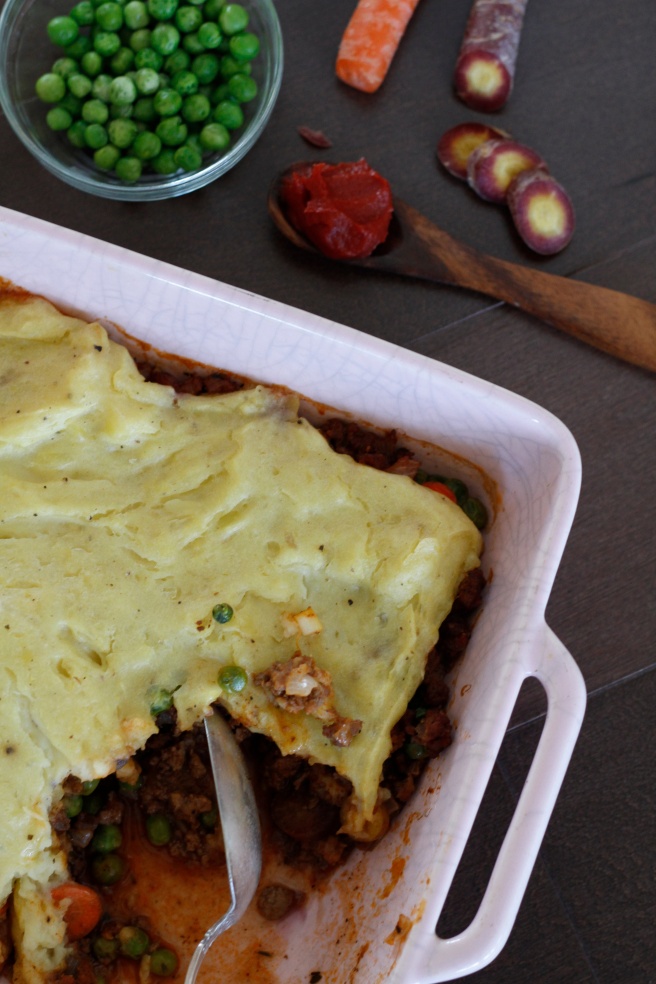
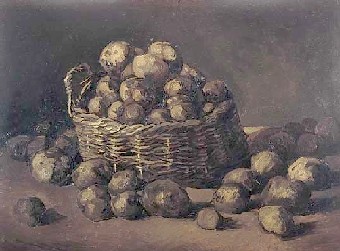
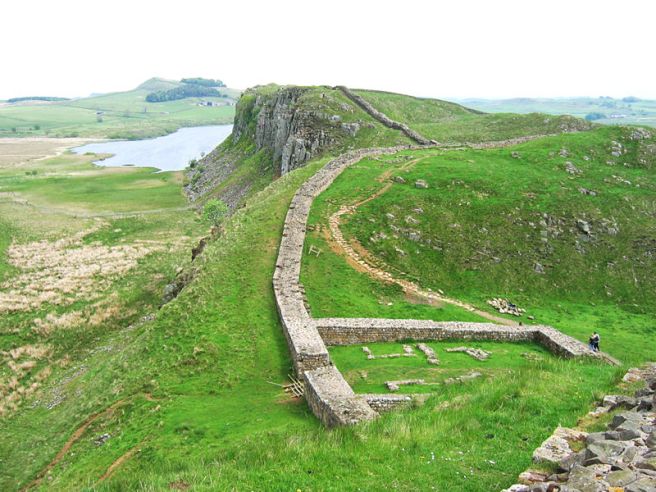
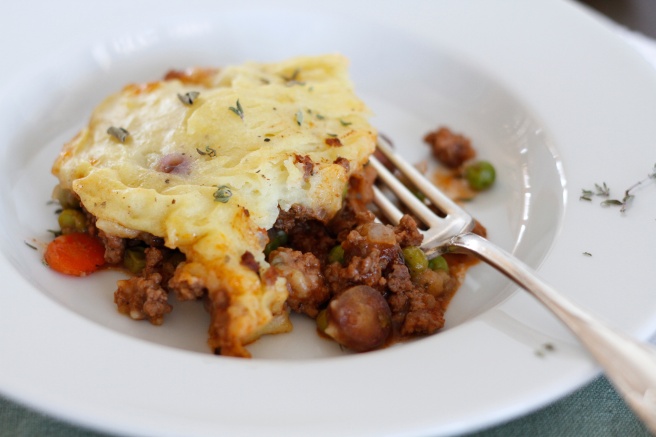
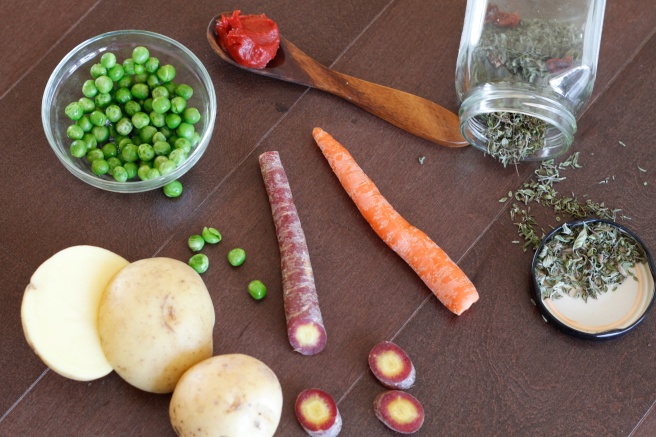
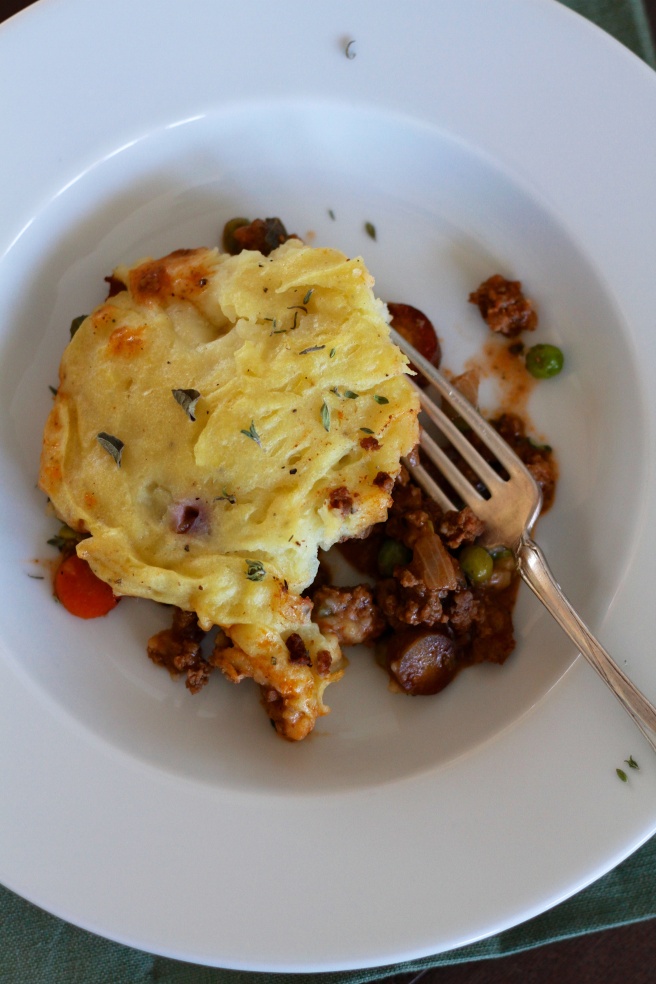


Growing and consuming organic foods was the normal way of life for our forefathers. Most people are not aware that synthetically packaged foods (made with synthetic ingredients and chemicals to prolong the preservation process) really only came around in the mid 1900s. Today, many smart consumers have returned to this healthier practice of eating fresh and organically grown foods where the production process is devoid of non-organic pesticides, insecticides, and herbicides.
Interesting comment. Thanks. Organic food and growing techniques need to be supported today and in the future.
looks great!!!!!!!!!!!- I wonder if regular gluten free flower instead of arrowroot would work, and if tofu or some other substitute would work instead of turkey?
If arrowroot flour is not available to you, tapioca flour works equally well. This website: http://www.joyofbaking.com/ingredientSubstitution.html offers some ideas, although none of them are specific to the gluten free diet. As far as substituting the turkey meat is concerned, we personally have not developed a recipe using tofu, mostly because of personal health concerns with it in the past. That being said, tempeh would possibly work well as far as texture and flavor is concerned. You may want to read the following articles, presenting independent, as well as more biased views, re soy products. One is on Dr. Mercola’s site which can be found at http://tinyurl.com/6xh9l9, as well as a well written article on VegFamily, which you can find here http://www.vegfamily.com/health/vegan-soy-information.htm. Please feel free and check back with us to let us know how your approach to this recipe is working out. To your health.
Inge and Gillian
I have enjoyed Cottage Pies during the children’s growing up…everything in one dish, so to speak. Learning to recook now has also been fun.
Which reminds me I have delighted in your e-cookbook and your paper cookbook and recommend others to purchase and try out all of your delightful recipes.
Linda
http://coloradofarmlife.wordpress.com
http://deltacountyhistoricalsociety.wordpress.com
Cottage pies are considered the forefathers of shepherd’s pie, giving the cook free license to use whatever is around.
So glad to hear you love the books. We are in the midst of completing the new ones and will get in touch with you when they are finished.
By the way, we love the rainbow photos on your blog. They are absolutely beautiful.